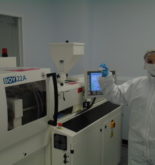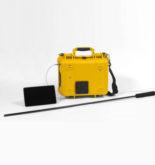Two of the biggest environmental problems facing the world today are improper waste management and a dearth of clean, renewable energy sources. But what if we could kill both of those problematic birds with one stone?
That’s exactly the route being pursued by Sandra Sassow of UK-based company SEaB energy. Founded back in 2009, the Southampton company specialise in constructing biogas generators which can convert waste into electricity onsite, thus enhancing efficiency and making businesses and communities entirely sustainable with regards to their energy needs.
A constant source of power
Renewable energy is certainly seen as the way of the future. But while solar, wind and wave power are all clean and limitless forms of energy generation, they all suffer from one crippling problem: intermittency.
When the sun doesn’t shine, the wind doesn’t blow and the waves don’t rage, these technologies become expensive and ultimately useless contraptions which don’t serve our needs. The beauty of biogas as a renewable energy source is that waste is one commodity we’ll never run out of. For that reason, biogas generators could theoretically thrive in the renewable energy sector, especially right now when it’s enjoying such a glut of popularity.
“If you look at wind and solar, they’re intermittent; they’re based around a resource that isn’t always there,” explains Sassow. “Using waste, you’re tying [power] to the amount of waste available on the site. So your fuel source is constant; your output of energy can be consistent, constant and predictable.”
Community recycling
SEaB have already developed two generator units: the Flexibuster, which can find inside a shipping crate and is designed for an urban environment, and the Muckbuster, of a similar size as its city-slicking cousin but geared towards recycling agricultural waste.
While these two units are not suitable for home use, they can be ideal options once a sufficient amount of waste is generated – for example, in a business office block, at a supermarket or at a central neighbourhood centre. This, in essence, is the direction in which Sassow and her company are heading.
“We’re looking at future cities, and this prediction that the majority of humans will live in megacities around the world,” she said. “When you look at what those megacities are about, could you change the way waste is handled in them, and make it decentralised and have it back at the building level so that nothing’s moving off-site?”
Best of both worlds
Obviously, harnessing a source of power that has been traditionally considered as waste would be incredibly beneficial for the environment, but it could pay massive dividends in a commercial sense, too.
At present, SEaB is still expanding its operations and currently has two case studies which have proved very promising. A Southampton NHS hospital has shown interest in the idea, as has a San Francisco-based housing development project named Place. If the idea proves successful, it could prove to be the blueprint for future building design on a global scale.
Just imagine if the developing world leapfrogged our current forms of sewage management and adopted an onsite biogas generator in all of their future construction plans. With the growing market for continual emissions monitoring systems (CEMS) in developing countries and the increasing consciousness surrounding environmental issues in general, the idea might not be as outlandish as it first seems.



